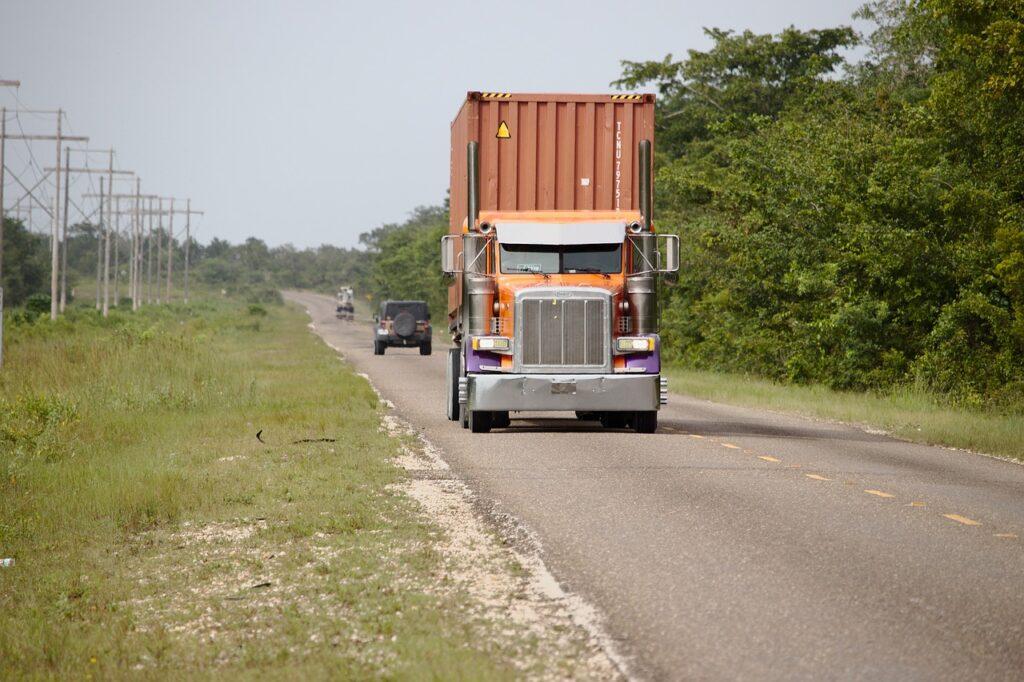
How Much Weight Can One Semi Truck Carry Nationally
Truck weight limits vary depending on the type of vehicle, its purpose, and geographical location. On average, a commercial truck can carry a weight of up to 40 tons (34 tonnes), but no clear guidelines apply across all of Europe or the world.
Each nation has its own regulations on truck weight limits, and many of these depend on whether a road is a national highway or a smaller, more rural road.
The issue of how much weight a semi truck can carry is not just an academic question for those interested in vehicle dynamics or engineering.
Truck carrying capacity also affects the economy as a whole by influencing the construction of roads and railways and international trade.
For example, there is currently a serious impasse between the European Union (EU) and Turkey over whether Trucks over 3.5 tonnes should be allowed to travel on Turkish roads; this question has become more urgent since the refugee crisis of 2015-2016.
Trucks that are allowed into Turkey are charged a levy to compensate for the roads’ poor quality and the extra wear and tear they cause.
A new arrangement has been proposed that would allow heavier trucks on Turkish roads in return for paying a higher levy, but this is controversial and opposed by some EU member states.
Truck limits: national comparisons
The maximum weight allowed on a truck varies by country and type of road.
In the US, there is no clear-cut limit, and the legal weight partly depends on what state you drive in: for example, in New York, trucks over 9.08 meters (30 feet) long are not permitted to carry more than 80,000 pounds (36 tonnes), whereas in Florida they can carry up to 100,000 pounds (45 tonnes).
In the UK, most roads and motorways permit trucks with a weight of 44 or 45 tonnes (40 and 41 tons), although some roads such as the A14 in Cambridgeshire allow trucks weighing up to 47.5 tonnes (43.5 tons).
The UK allows longer and wider trucks than the US, but the opposite is true for other countries such as Brazil and Japan.
In Brazil, no truck can weigh more than 25 tonnes (25.5 short tons), and each state has its own restrictions on length and weight.
In Japan trucks over 12 meters long are not allowed on expressways at all, while those between 9.1 and 12 meters long must follow stringent rules to make sure they do not damage roads because of their weight or size.
By landmass, Africa has some of the least restrictive weight limits – Cameroon allows loads up to 44 tonnes (40 tons), Morocco allows them up to 46 tonnes (42 tons) – but Central America is the least restrictive, with some states having no limits at all (Honduras), or very high limits (Guatemala’s trucks can weigh up to 60 tonnes; Nicaragua has no weight restrictions).
Some countries have more than one set of laws governing truck weight.
France, for example, has three tiers: 50 tonnes (45 tons) on regular roads, 54 tonnes (49.5 tons) on major roads known as ‘routes départementales,’ and 59 tonnes (54 tons) on expressways called ‘autoroutes.’
Spain similarly has 55-tonne (51-ton) limits that cover most motorways but there are also exceptions where 70 tonnes (64 tons) is allowed.
Other European countries have special rules for driving on highways or through tunnels because of the possibility of a fire breaking out due to accumulated gas from trucks.
In South America, Chile is one of the nations with the fewest restrictions – trucks over 3.5 tonnes (3.175 tons) can drive freely – while Brazil has some special regulations that vary by state.
Trucks weighing more than 13 tonnes (12.5 tons) are banned from driving at night, and those weighing between 9 and 12 tonnes cannot drive between 10 pm and 4 am unless they have a ‘cancellation mark’ – a sticker specific to each vehicle – from their registration documents.
Asia also has its specificities: in Japan, no articulated lorries are allowed, except from 11 pm to 4 am, and there are other special conditions for driving on expressways.
In India, trucks over 28 tonnes (26 tons) cannot drive in the central zone of Delhi between 8 am and 8 pm every day.
Singapore prohibits trucks over 32 tonnes (30 tons) from its city center during certain times of the day because of limited road capacity.
Also worth noting is that not all countries have a single set of rules.
Turkey has two different regimes depending on whether a truck is going to or from Europe through its ‘Ankara Agreement’ network or elsewhere.
Iran distinguishes between routes from Azerbaijan, Pakistan, and Central Asia; while Kuwait makes a distinction between GCC roads and those outside this area.
There is a myriad of rules and regulations that apply, but the limits imposed by countries on their roads vary considerably.
In Italy, for example, articulated trucks can travel up to 50 kilometers per hour (31mph) on some rural roads if they have a EUR 3 ‘slow traffic’ sticker from their registration documents.
However, in Switzerland, there are no weight restrictions for trucks driving between 20km/h and 50km/h (12-31mph), while in Germany, there is a general 15-tonne (16-ton) limit except for vehicles over 16 meters long, which have a 25-tonne (26-ton) maximum load.
Trucks with trailers – known as articulated trucks or semi-trailers – are allowed to carry heavier loads than normal trucks.
This is because they have an additional articulation between the cab and front or rear trailer(s) that allows extra flexibility in negotiating tight turns and corners and reduces their turning circle, hence increasing maneuverability and cutting down on damage to the road surface when they follow a ‘Z pattern’ movement during a turn; it also means that they can negotiate more steeply inclined roads.
We also published this article on what semi truck can tow the most you may also like
Conclusion
It is safe to say that just as truck drivers and car drivers around the world navigate their way through road systems on a daily basis, so too must logistics managers and transport planners are aware of their nation’s restrictions on weight and size limits and conditions of the roads to which they travel, as well as those of neighboring countries that they will potentially be using.
And although heavy goods vehicles (HGVs) may not always drive within the speed limit, slower speeds also mean less wear and tear on road surfaces – something that is no doubt worthy of consideration in these economic testing times.
We hope you enjoyed this post on How Much Weight Can One Semi Truck Carry Nationally
